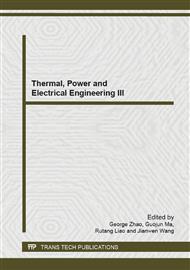p.43
p.47
p.52
p.57
p.61
p.65
p.69
p.73
p.78
Wetting Property of Cu-Doped ZnO with Micro-/Nano-Structures
Abstract:
ZnO with different morphologies were formed on Zn foils immersed in various concentrations of CuSO4 solutions. Then the specimens were heated at temperature of 200~600°C in air for 3h. The morphologies of as-prepared specimens were characterized by a scanning electron microscope (SEM). Water wetting angles on the specimens were measured. The results indicate that the morphologies of ZnO on the Zn foils relate to the CuSO4 concentration of in solutions. The morphologies on the specimens with dual-scale (nanoand micro) structure have higher wetting angles than those with flat structure. The water wetting angles can reduce with the increase in annealing temperatures of immersed specimens. The water wetting angles increase with keeping immersed specimens at room temperatures. The change of the wetting angle is explained by absorption of organic carbon on specimen surface and the geometric structure of the surface.
Info:
Periodical:
Pages:
61-64
Citation:
Online since:
June 2014
Authors:
Keywords:
Price:
Сopyright:
© 2014 Trans Tech Publications Ltd. All Rights Reserved
Share:
Citation:


